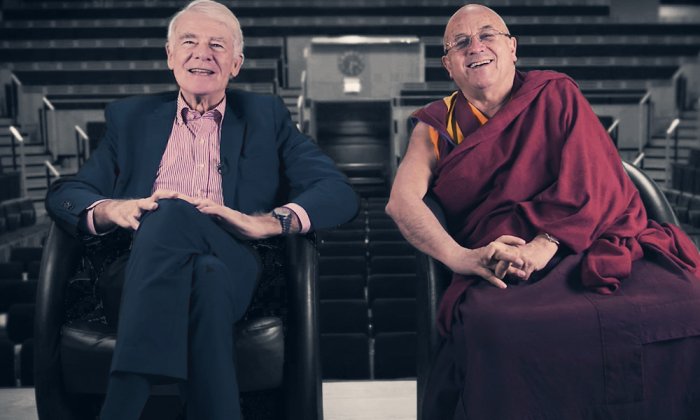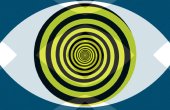On Meditation and the Unconscious: A Buddhist Monk and a Neuroscientist in Conversation

Buddhism shares with science the task of examining the mind empirically; it has pursued, for two millennia, direct investigation of the mind through penetrating introspection. Neuroscience, on the other hand, relies on third-person knowledge in the form of scientific observation.

In the following conversation, Matthieu Ricard, a Buddhist monk trained as a molecular biologist, and Wolf Singer, a distinguished neuroscientist, offer their perspectives on the unconscious and the role of meditation in resolving conflicts that arise at levels inaccessible to conscious processing.
The text is excerpted from their book “Beyond the Self: Conversations between Buddhism and Neuroscience,” a collection of illuminating exchanges Ricard and Singer — close friends — had over the course of eight years at meetings around the world. Their objective, as they write in the book’s preface, “is to confront two perspectives anchored in rich traditions: the contemplative Buddhist practice, and epistemology and research in neuroscience.”
—The Editors
Matthieu Ricard: Let’s explore for a bit the notion of the unconscious, from neuroscientific and contemplative perspectives. Usually when people speak about the unconscious, they refer to something deep in our psyche that we cannot access with our ordinary consciousness. We certainly have the concept, in Buddhism, of habitual tendencies that are opaque to our awareness. These tendencies initiate various thought patterns that can either occur spontaneously or be triggered by some kind of external circumstance. Sometimes you are just sitting there, thinking of nothing in particular, and suddenly the thought of someone or a particular event or situation pops up in the mind, seemingly out of nowhere. From there, a whole chain of thoughts begins to unfold, and if you are not mindful, you can easily get lost in it.
The general public, psychologists, and neuroscientists surely have varying views about what the unconscious is. As for psychoanalysis, what it calls the depths of the unconscious are, from a contemplative perspective, the outer layers of clouds formed by mental confusion that temporarily prevent one from experiencing the most fundamental nature of mind. How can there be something unconscious in a state of pure awareness, devoid of mental construct? No darkness exists in the middle of the sun. For Buddhism, the deepest, most fundamental aspect of consciousness is this sun-like awareness, not the murky unconscious. Of course, this is all expressed from the first-person perspective, and I am sure that a neuroscientist approaching this issue from the third-person perspective will have a different view of the unconscious.
“For Buddhism, the deepest, most fundamental aspect of consciousness is [a] sun-like awareness, not the murky unconscious.”
Wolf Singer: Yes, I see it a bit differently. As mentioned earlier, an enormous amount of knowledge is stored in the specific architectures of the brain, but we are not aware of most of these “given” heuristics, assumptions, concepts, and so on. These routines determine the outcomes of cognitive processes, which we are aware of, but the routines remain hidden in the unconscious. Usually we are not aware of the rules that govern the interpretation of sensory signals, the construction of our percepts, or the logic according to which we learn, decide, associate, and act.
We cannot move these implicit hypotheses and rules to the workspace of consciousness by focusing our attention on them, as is possible with contents stored, for example, in declarative memory, the memory in which we store what has been consciously experienced. Abundant evidence indicates that attentional mechanisms play a crucial role in controlling access to consciousness. When attended to, most signals from our senses can reach the level of conscious awareness. Exceptions are certain odors, such as pheromones, that are processed by special subsystems and cannot be perceived consciously. Then there are the many signals from within the body that are excluded from conscious processing, such as messages about blood pressure, sugar level, and so on. It cannot be emphasized enough, however, that signals permanently excluded from conscious processing as well as transitorily excluded signals such as nonattended sensory stimuli still have a massive impact on behavior. In addition, these unconscious signals can control attentional mechanisms and thereby determine which of the stored memories or sensory signals will be attended and transferred to the level of conscious processing.
Another constraint is the limited capacity of the workspace of consciousness. At any one moment in time, only a limited number of contents can be processed consciously. Whether these limitations are due to the inability to attend to large numbers of items simultaneously or whether they result from the restricted capacity of working memory or both is still a matter of scientific investigation. The capacity of the workspace is limited to four to seven different items. This finding corresponds to the number of contents that can be kept simultaneously in working memory. The phenomenon of change blindness, the inability to detect local changes in two images presented in quick succession, demonstrates impressively our inability to attend to and consciously process all features of an image simultaneously.
Perception is actually not as holistic as it appears to be. We scan complex scenes serially, and actually much of what we seem to perceive we are in fact reconstructing from memory. Which of the many signals actually reach the level of conscious awareness is determined by a host of factors, both conscious and unconscious. It depends on what we attend to, and this is controlled by either external cues, such as the saliency of a stimulus, or internal motifs, many of which we may not actually be aware of. Then it may occur that even an attentive, conscious search for content stored in declarative memory fails to raise it to the level of awareness. We are all familiar with the temporary inability to remember an episode or a name and then how a persisting subconscious search process may suddenly lift the content into the workspace of consciousness. It appears that we are not always capable of controlling which contents enter consciousness.
I consider the workspace of consciousness as the highest and most integrated level of brain function. Access to this workspace is privileged and controlled by attention. Moreover, the rules governing conscious deliberations such as consciously made decisions most likely differ from those of subconscious processes. The former are based mainly on rational, logical, or syntactic rules, and the search for solutions is essentially a serial process. Arguments and facts are scrutinized one by one and possible outcomes investigated. Hence, conscious processing takes time. Subconscious mechanisms seem to rely more on parallel processing, whereby a large number of neuronal assemblies, each of which represents a particular solution, enter into competition with one another. Then a “winner-takes-all” algorithm leads to the stabilization of the assembly that best fits the actual context of distributed activity patterns. Thus, the conscious mechanism is suited best to circumstances in which no time pressure exists, when not too many variables have to be considered, and when the variables are defined with sufficient precision to be subjected to rational analysis. The domains of subconscious processing are situations requiring fast responses or conditions where large numbers of underdetermined variables have to be considered simultaneously and weighed against variables that have no or only limited access to conscious processing, such as the wealth of implicit knowledge and heuristics, vague feelings, and hidden motives or drives.
“We scan complex scenes serially, and actually much of what we seem to perceive we are in fact reconstructing from memory.”
The outcome of such subconscious processes manifests itself in either immediate behavioral responses or what are called “gut feelings.” It is often not possible to indicate with a rational argument why exactly one has responded in that way and why one feels that something is wrong or right. In experimental settings, one can even demonstrate that the rational arguments given for or against a particular response do not always correspond to the “real” causes. For complex problems with numerous entangled variables, it often turns out that subconscious processes lead to better solutions than conscious deliberations because of the wealth of heuristics exploitable by subconscious processing. Given the large amount of information and implicit knowledge to which consciousness has no or only sporadic access and the crucial importance of subconscious heuristics for decision making and the guidance of behavior, training oneself to ignore the voices of the subconscious would not be a helpful, well-adapted strategy.
MR: What you said corresponds with what Daniel Kahneman explains in his book “Thinking, Fast and Slow.” Although we are generally convinced that we are rational, our decisions, economic or otherwise, are often irrational and strongly influenced by our immediate gut feelings, emotions, and situations to which we have been exposed immediately before taking a decision. Intuition is a highly adaptable faculty that allows us to make fast decisions in complex situations, but it also lures us into thinking that we have made a rational choice, which actually takes more time and deliberation.
I understand that a lot is going on in the brain to allow us to function and have coherent perceptions, memories, and so on. But I was thinking more of the pragmatic aspect of dealing with the particular tendencies that give rise to the afflictive mental states and emotions associated with suffering. My point was that if you know how to relate to pure awareness and rest within that space of awareness, when disturbing emotions arise, they dissolve as they appear and do not create suffering. If one is an expert in this, then there is no need to bother about what is going on down in the subconscious. It is more a question of method. Psychoanalysis, for instance, contends that you need to find a way to dig into those hidden impulses and identify them, whereas Buddhist meditation teaches you to free the thoughts as they arise.
By dwelling in the clarity of the present moment, you are free from all ruminations, upsetting emotions, frustrations, and other inner conflicts. If you learn to deal, moment after moment, with the arising of thoughts, then you can preserve your inner freedom, which is the desired goal of such training.
Side Effects of Meditation
WS: Here we seem to face rather divergent concepts of the virtues of subconscious processing and the way we should deal with the unconscious dimension of our mind. This brings me to a critical issue: the side effects of meditation. One could argue that a strategy consisting of closing one’s eyes when facing conflicts, in escaping from problems rather than solving them, is perhaps a suboptimal strategy. Let us assume that conflicts exist in the subconscious and that the rumination motivated by these conflicts serves to identify and settle them. Such conflicts could arise from ambiguous bonding between the child and her caretaker in early infancy or from conflicting imperatives imprinted by early education. The causes of such problems cannot easily surface in consciousness because they are part of implicit memories that have been formed prior to the maturation of declarative memory. Such conflicts jeopardize mental and physical health.
Humankind throughout its history has sought relief from such problems, with drugs, cultural activities, and, more recently, a host of specially designed therapies. Most of the latter require one to face the problem to cope with it. Another strategy, which is applied in cognitive and behavioral therapy, attempts to alleviate the problem by unlearning the habit using conditioning paradigms. If one suffers from a particular phobia, then one gets exposed to the threatening events and learns that they don’t cause harm, and after a while, one habituates to the threat and the problem may be solved.
MR: We surely need to get at the heart of the issue. But in the end, what we need is to be free from inner conflicts, one way or another, right? So, there might be ways that involve digging into the past as much as one can, with or without the help of a therapist, and then trying to solve the problem or trauma that has thus been identified, thereby freeing oneself from the afflictive effect. But there are also ways, including those used by Buddhism, that do not attempt to elude the problem but to free any conflicting thoughts that arise in the mind at the moment they arise. If you become expert in those methods, the so-called afflictive thoughts no longer have the power to afflict you because they undo themselves the moment they arise. But that is not all: Experience shows that by repeatedly doing so, you not only deal successfully with each individual arising of afflictive thoughts but you also slowly erode the tendencies for such thoughts to arise. So in the end, you are free of them entirely. Among contemporary Western therapies, cognitive and behavioral therapy also offer methods to attend precisely to a particular emotion that upsets you in the moment and deal with it in a reasonable and constructive way and has therefore some interesting similarities with the Buddhist approach.
WS: Let us see what meditation could contribute to the resolution of conflicts that arise at levels inaccessible to conscious processing. I shall take a critical stance and use a real-world problem as an example. Imagine a conflict evolves between two partners that evokes uneasy feelings and causes lasting mental rumination in both parties. Their two ego bubbles fight against each other, as in “Who’s Afraid of Virginia Woolf?” Love and passion exist between them, which are both difficult to control because they are anchored in subconscious spheres. The partners go into retreat and meditate, stop ruminating, and feel fine while they meditate alone in a protected environment. But will this solve the problem? Will they not resume fighting once they are back home, together, and confronted again with their problems?
MR: To openly confront our differences can be a way to pacify a conflict, but it is not the only one. To begin with, a conflict requires two protagonists confronting each other in antagonistic ways. One cannot clap with one hand only. In fact, if one of the persons involved disarms his or her own antagonistic mind, then it will contribute greatly to reducing the conflict with the other person.
We did an experiment at Berkeley with Paul Ekman and Robert Levenson, who, among other things, have been studying conflict resolution. In this case, they wanted me to have two conversations with two different people. The idea was to discuss a controversial topic — in this case, why a former biologist like me, who did research in a prestigious lab at Pasteur Institute, would ever choose not only to become a Buddhist monk but to believe in crazy things such as reincarnation. We were all fitted with all kinds of sensors detecting our heart rate, blood pressure, breathing, skin conductivity and sweating, and body movements, and our facial expressions were recorded on a video camera, to be later analyzed in details for fleeting microexpressions. My first interlocutor was Professor Donald Glaser, a Nobel laureate in physics, who then moved to research in neurobiology. He was an extremely kind and open-minded person. Our discussion went well, and at the end of the 10 minutes, we both regretted not having more time to dialogue. Our physiological parameters indicated a calm, nonconflictual attitude. Then came in someone who had to be chosen because he was reputed to be a rather difficult person — he was not told about that of course! He knew that we were supposed to get into a heated debate and went straight into it. His physiology became immediately highly aroused. From my side, I tried my best to remain calm — I actually enjoyed it — and did my best to provide reasonable answers delivered in a friendly way. Soon enough, his physiology became calmer and calmer, and at the end of the 10 minutes, he told the researchers, “I can’t fight with this guy. He says reasonable things and smiles all the time.” So, as the Tibetan saying goes, “One cannot clap with one hand.”
As far as your own inner conflicts are concerned, if you use meditation simply as a quick fix to superficially appease your emotions, you temporarily enjoy a pleasant deferral of these inner conflicts. But as you rightly say, these cosmetic changes have not reached the root of the problem.
Merely putting problems to sleep for a while or trying to forcibly suppress strong emotions will not help either. You are just keeping a time bomb ticking somewhere in a corner of your mind.
True meditation, however, is not just taking a break. It is not simply closing one’s eyes to the problem for a while. Meditation goes to the root of the problem. You need to become aware of the destructive aspect of compulsive attachment and all of the conflictive mental states that you mentioned. They are destructive in the sense of undermining your happiness and that of others, and to counteract them you need more than just a calming pill. Meditation practice offers many kinds of antidotes.
A direct antidote is a state of mind that is diametrically opposed to the afflictive emotion you want to overcome, such as heat and cold. Benevolence, for instance, is the direct opposite of malevolence because you cannot wish simultaneously to benefit and harm the same person. Using this kind of antidote neutralizes the negative emotions that afflict us.
Let’s take the example of desire. Everyone would agree that desire is natural and plays an essential role in helping us to realize our aspirations. But desire in itself is neither helpful nor harmful. Everything depends on what kind of influence it has over us. It is capable of both providing inspiration in our life and poisoning it. It can encourage us to act in a way that is constructive for ourselves and others, but it can also bring about intense pain. The latter occurs when desire is associated with grasping and craving. It then causes us to become addicted to the causes of suffering. In that case, it is a source of unhappiness, and there is no advantage in continuing to be ruled by it. Here you may apply the antidote of inner freedom to the desire that causes suffering. You bring to your mind the comforting and soothing quality of inner freedom and spend a few moments allowing a feeling of freedom to be born and grow in you.
“True meditation is not just taking a break. It is not simply closing one’s eyes to the problem for a while. Meditation goes to the root of the problem.”
Because desire also tends to distort reality and project its object as something that you cannot live without, to regain a more accurate view of things, you may take the time to examine all aspects of the object of your desire and see how your mind has superimposed its own projections onto it. Finally, you let your mind relax into the state of awareness, free from hope and fear, and appreciate the freshness of the present moment, which acts like a balm to soothe the burning of desire. If you do that repeatedly and perseveringly — and this point is really the most important — this will gradually lead to a real change in the way you experience things all the time.
The second, even more powerful way to deal with afflictive emotions is to stop identifying with them: You are not the desire, you are not the conflict, and you are not the anger. Usually we identify with our emotions completely. When we become overwhelmed by desire, anxiety, or a fit of anger, we become one with it. It is omnipresent in our mind, leaving no room for other mental states such as inner peace, patience, or reasoning, which might calm our torments.
The antidote is to be aware of desire or anger, instead of identifying with it. Then the part of our mind that is aware of anger is not angry, it is simply aware. In other words, awareness is not affected by the emotion it is observing. Understanding that makes it possible to step back and realize that the emotion is actually devoid of solidity. We just need to provide an open space of inner freedom, and the internal affliction will dissolve by itself.
By doing so, we avoid two extremes, each as inefficient as the other: repressing our emotion, which would then remain as powerful as before, or letting the emotion flare up, at the expense of those around us and of our own inner peace. Not to identify with emotions is a fundamental antidote that is applicable to all kinds of emotions in any circumstance.
This method might seem difficult at the beginning, especially in the heat of the moment, but with practice, it will become easier to retain mastery of your mind and deal with the conflicting emotions of day-to-day life.
Matthieu Ricard, a Buddhist monk, trained as a molecular biologist before moving to Nepal to study Buddhism. He is the author of several books, including “The Monk and the Philosopher” (with his father, Jean-François Revel); “The Quantum and the Lotus” (with Trinh Xuan Thuan); “The Art of Meditation“; and “Beyond the Self: Conversations between Buddhism and Neuroscience” (with Wolf Singer), from which this article is excerpted. The MIT Press will publish the English translation of his memoir, “Notebooks of a Wandering Monk,” next fall.
Wolf Singer is Emeritus Director of the Max Planck Institute for Brain Research and Founding Director of the Frankfurt Institute for Advanced Studies and the Ernst Strüngmann Institute for Neuroscience in cooperation with the Max Planck Society, where he is also Senior Research Fellow.



